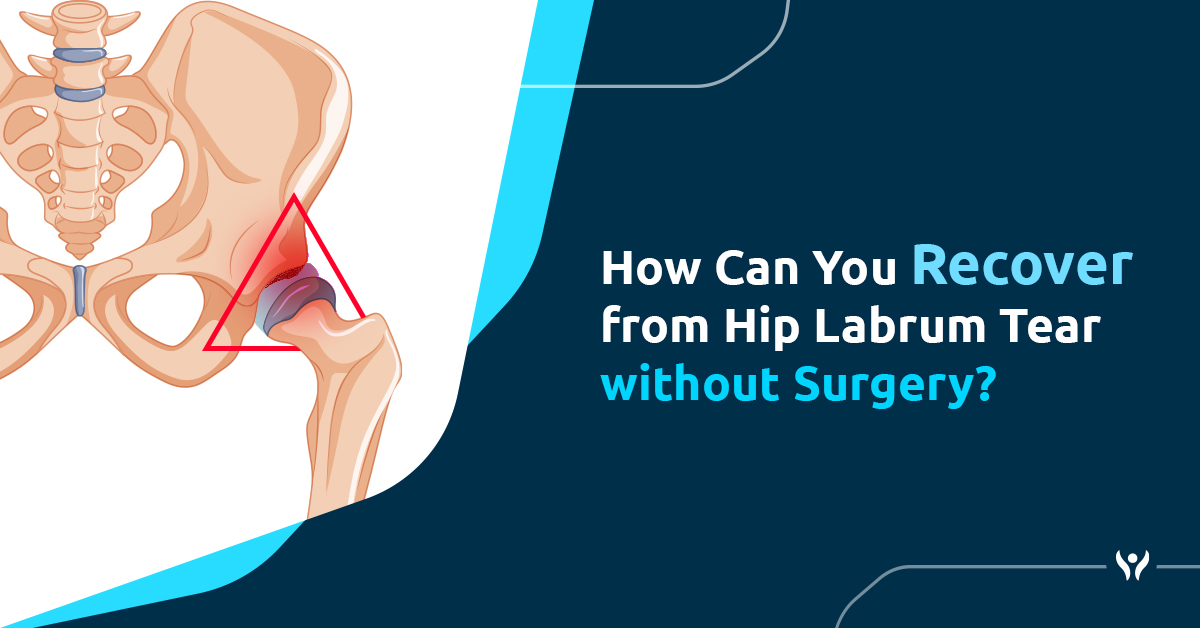Do not underestimate the pain in your hip and groin area – it could be a sign of a labral tear in your hip joint. This tear is caused by excessive movement and is more common in individuals involved in dance and sports. If you continue to overuse your hip joint, surgery may be necessary if traditional treatments do not provide significant relief. Before considering surgery, it is worth exploring alternative options.
Our Medica Stem Cells Clinic in the UK recommends Medica stem cell therapy and PRP therapy as effective alternatives for healing hip labral tears. However, before discussing the efficiency of Medica stem cell therapy, it is important to understand what happens when the hip labrum tears.
What does the term hip labrum tear refer to?
The hip joint is similar to a ball and socket joint, where the thigh bone (femur) fits snugly into the socket (acetabulum). This joint provides stability and allows for smooth movement without discomfort. The hip labrum, a fibrous and cartilaginous ring, covers the socket and helps the hip move without pain. It also acts as a shock absorber, protecting the hip bones and reducing friction between the ball and socket. The hip labrum also helps maintain proper alignment and regulates the amount of synovial fluid in the hip joint.
Recovering from a hip labrum tear without surgery typically involves conservative treatments aimed at reducing pain, improving hip joint function, and promoting healing. It’s important to note that the effectiveness of non-surgical methods may vary depending on the severity of the tear and individual factors. Always consult with a healthcare professional for a personalized treatment plan.
A tear in the hip labrum can occur from excessive use of the hip joint during exercises, sports, strenuous activities, dancing, or from trauma. The most common cause of a labrum tear is femoroacetabular impingement (FAI), where the ball (femur) doesn’t fit properly into the socket (acetabulum).
Understand hip labrum tear symptoms
Symptoms associated with a hip labrum tear comprise of hip or groin pain, discomfort during hip movements such as rotation or bending, stiffness, limited range of hip motion, instability in the hip joint, and the presence of clicking or locking sounds. Neglecting timely treatment for a hip labrum tear can potentially result in the development of hip osteoarthritis.
Conventional Hip Labrum Tear Treatment
The conventional treatment for a hip labrum tear typically involves a combination of rest, physical therapy, and pain medication. In some cases, surgical intervention may be necessary.
R.I.C.E:
The R.I.C.E. formula can be used as a conservative treatment approach for a hip labrum tear. Here’s how it can be applied:
- Rest: Resting the affected hip allows the labrum to heal without additional stress. Avoid activities that aggravate the hip joint and worsen the symptoms.
- Ice therapy: Apply ice to the hip joint for 15-20 minutes every 2-3 hours. Ice helps reduce pain, inflammation, and swelling associated with the labral tear. Wrap the ice pack in a towel or cloth to protect the skin and prevent ice burn.
- Compression: Use compression techniques to reduce swelling and provide support to the hip joint. This can be done by wrapping an elastic bandage or wearing a compression sleeve around the hip. Make sure the compression is firm but not too tight, as it may affect blood circulation.
- Elevation: Elevating the hip above the heart level can help reduce swelling and promote blood flow to the area. Prop up the hip with pillows while lying down or find a comfortable position that elevates the hip joint.
Physical therapy:
Physical therapy is a crucial part of the treatment plan for a hip labrum tear. It focuses on strengthening the muscles around the hip joint to provide better support and stability. Exercises may include stretching, strengthening, and stability exercises.
Pain medication:
Over-the-counter pain medication, such as nonsteroidal anti-inflammatory drugs (NSAIDs), can help relieve pain and reduce inflammation associated with a hip labrum tear. Stronger prescription pain medications may be prescribed in more severe cases.
Corticosteroid injections:
In some cases, corticosteroid injections may be used to reduce inflammation and alleviate pain. These injections are typically administered directly into the hip joint.
Surgical intervention:
If conservative treatments do not provide sufficient relief, surgery may be recommended. Hip arthroscopy is a minimally invasive surgical procedure that allows the surgeon to repair or remove the torn labrum. Rehabilitation following surgery is important to regain strength and range of motion in the hip joint.
However, these methods only provide temporary relief and do not address the underlying cause of the issue. Additionally, surgery carries the risk of permanent nerve damage, as the femoral nerve may lose its ability to transmit signals during the procedure of opening the hip joints.
Regenerative Hip Labrum Tear Treatment
If there is a natural and non-surgical option available to address the root cause of the hip labral tear, would you choose to undergo surgery? The answer would likely be a resounding no. This is where our Medica Stem Cells Clinic in the UK comes in, offering regenerative therapy to effectively address this issue.
Regenerative treatment offers various therapies, such as cellular therapy, platelet-rich plasma (PRP) therapy, and prolotherapy, which can effectively repair and restore damaged tissues. This minimally invasive approach promotes quick and natural healing. Hip labral tears often suffer from inadequate blood supply to the labrum, making it challenging to heal using conventional methods. However, our regenerative treatment not only addresses the tear but also revitalizes the labrum, realigns the ball and socket joint, and enhances the healing process. Consequently, regenerative therapy proves to be a highly efficient alternative to surgery for treating labrum tears.
To learn more about the regenerative cell treatment available for hip labrum tear, please visit the website http://www.medicastemcells.com. Medica Stem Cells Clinic in the UK provides a range of regenerative cell treatments, such as platelet-rich plasma (PRP) therapy, prolotherapy, mesenchymal cell therapy, as well as physical therapy. These services may be utilized individually or in combination. If you would like more information about these services, please call 020 8 168 2000.




